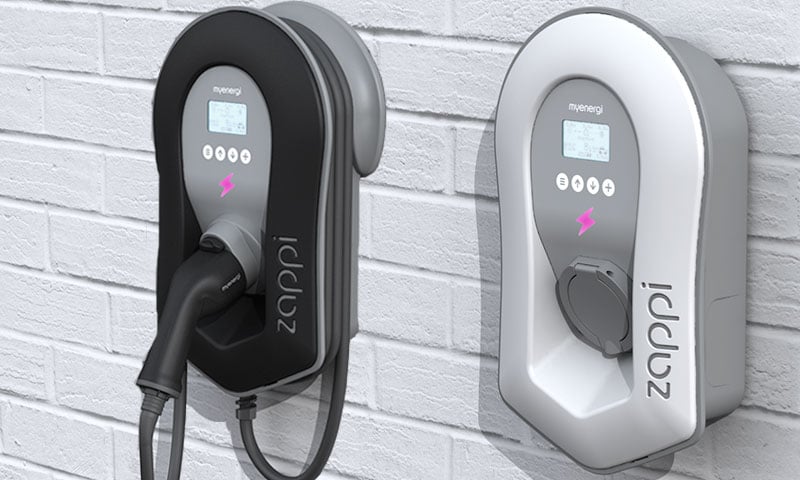As of Wednesday 10th June, the UK hit a huge milestone of going two months without burning any coal for electricity generation. This is due to a combination of the reduced national energy consumption since the start of lockdown and the high investment in renewable energy over the past decade. Approximately 800,000 homes now have solar PV installed, helping to contribute to the decarbonisation of the grid, while also reducing their energy bills.
As electricity generation continues to decarbonise, the next logical step is for the transport sector to shift away from fossil fuels and towards electric vehicles. Over the past couple of months, the number of vehicles sold has dropped considerably. Electric and hybrid vehicles, however, feature more heavily than usual in the ‘top 10 models sold’ and more Tesla Model 3s have been sold over the past two months than any other car.
With the number of homes generating their own clean energy via solar PV and the number of electric vehicles on the road growing, we thought we’d take some time to analyse the benefits of pairing a domestic solar PV system with an electric car to quantify the potential financial savings.
Solar compatible chargers
Most chargers will charge your vehicle at a standard 7kW, regardless of your solar PV generation. This means that if you only have 2kW of excess solar, you will draw 5kW from the grid to charge your vehicle, which will of course add to your energy bill.

The zappi charger, however, has smart solar functionality and eco modes which allow it to charge at a slower rate, but using only excess solar PV. For example, if you have 2kW of excess solar, your vehicle will charge at a rate of 2kW and draw nothing from the grid, meaning your vehicle is essentially charging for free. While this does mean your vehicle will charge slower, it will increase your on site consumption of solar PV and further reduce your electricity bill.
Modelling the savings
When looking at the benefits of solar PV systems paired with an electric vehicle, there are four different scenarios we ought to consider:
- you have a PV system and drive a petrol vehicle;
- you have no PV system and drive an electric vehicle;
- you have a PV system and drive an electric vehicle;
- you have no PV system and drive a petrol vehicle.
In this example we will consider a user who makes one short journey a day and is away from home for a few hours each morning. It has been assumed that the user follows a standard domestic energy load profile with the annual mileage evenly distributed over the year.
|
PV only |
EV only |
PV + Zappi |
No PV or EV |
|
|
Annual electricity usage |
4,000 kWh |
5,529 kWh |
5,529 kWh |
4,000 kWh |
|
On site usage of solar generation |
38% |
- |
55% |
- |
|
Annual cost of electricity |
£209 |
£829 |
£376 |
£549 |
|
Annual fuel cost |
£1,014 |
£331 |
£229 |
£1,014 |
|
Total annual electricity & fuel cost |
£1,223 |
£1,160 |
£605 |
£1,563 |
A full list of our assumptions can be seen at the end of the blog post.
The data shows that there can be considerable savings of having either solar PV or an electric vehicle. The biggest savings can be found when you combine a PV system and an EV with a solar-optimised charger.
For the case detailed in this blog, approximately a third of the electric vehicle’s charge comes from excess solar generation. This means that one in three drives can be considered money- and guilt-free, as it is powered by clean energy which you’ve generated at no cost.
It is also worth noting that in recent years electricity prices have exhibited an annual increase of roughly 6%, which means that your electricity savings will increase year on year if you have PV installed. The addition of an electric vehicle to a household will typically increase the annual electricity usage by approximately 2,000 kWh/year, which equates to an added £300 to your electricity bill, assuming a rate of 15p/kWh. After only 5 years, taking into account the rate of electricity inflation, the cost of ‘fuelling’ your electric vehicle is expected to rise to over £400. Installing PV will not only provide significant savings but more importantly will help to protect against the rising cost of electricity, by making you more grid independent.
In conclusion
While it can be shown that there are clear financial and environmental benefits of pairing an electric vehicle with a solar PV system, we appreciate that the upfront cost especially of a new EV can be high. But if you already have an electric vehicle, installing solar PV can be a wise investment to offset your energy bills. And if you are considering buying a new car and already have solar panels installed, then switching to an EV can make a lot of sense to maximise the benefits of your existing PV system.
If you would like any advice on how solar PV could benefit you or if you are interested in installing a charger in anticipation of the arrival of your new EV, please get in touch and we would be more than happy to help.

Calculation assumptions
For the example modelled above we assume:
|
EV charged installed |
zappi |
|
Annual electricity usage |
4,000kWh/year |
|
Electricity rate |
15p/kWh |
|
Cost of petrol |
13.89p/mile |
|
Miles per gallon |
36mpg |
|
Energy demands of EV |
303Wh/mile |
|
Distance travelled per day |
20 miles |
|
Vehicle away from home |
10am - 1pm |










